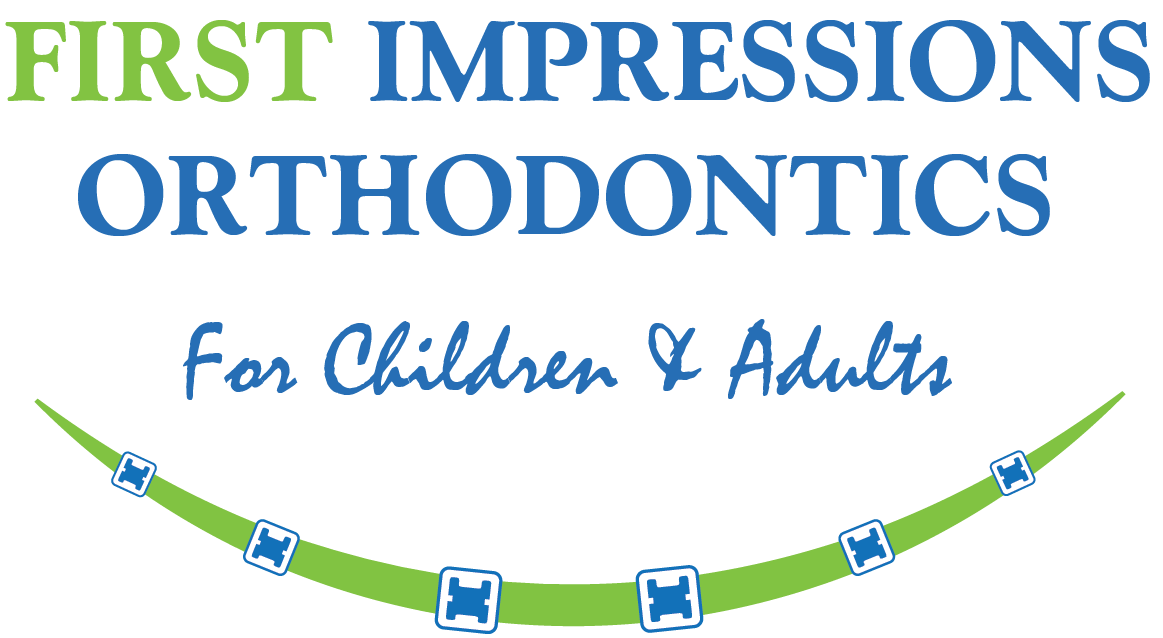Other Orthodontic Appliances
When most people think of orthodontic treatment, they tend to think of traditional braces. Some may also think of the more recently popular clear aligners, an alternative to traditional braces that uses clear plastic aligners, rather than brackets and wires, to correct the alignment of the teeth. While these options are quite common, they are not the only appliances used for orthodontic treatments. At First Impressions Orthodontics for Children & Adults, we are here to help you understand all of your options so that you can achieve a healthier, more beautiful smile.
Nance Space Maintainer
A Nance space maintainer is a type of appliance that is worn in the upper arch. Used in children, it is designed to prevent the upper molars from moving forward while waiting for the rest of the adult teeth to grow into place. Two bands are cemented around the first molars with a metal wire that spans over around the arch. An acrylic pad, also called a button, covers a portion of the palate.
Lower Lingual Holding Arch
A lower lingual holding arch is similar to a Nance space maintainer, only this appliance is used to prevent molars in the lower jaw from shifting forward. This leaves the space necessary for the rest of the adult teeth to grow in. Like the Nance space maintainer, this appliance is often recommended in the instance of premature loss of baby teeth.
Thumb Habit Appliances
Thumb sucking is a completely normal habit for infants and toddlers. Most children lose this natural reflex between the ages of 2 and 4. Thumb sucking that continues past this age can cause problems with oral development. While some children can stop sucking their thumbs with some help, others cannot. A fixed palatal crib can be put on the upper arch, behind the front teeth. This appliance can help to stop thumb sucking in as little as a month.
Twin Block
A twin block is an appliance that is used to help correct the position of the jaw. It consists of upper and lower appliances, which are removable. These appliances work together to help pull the lower jaw forward. It is often recommended to help children who have an underdeveloped lower jaw.
Crossbow Appliance
A crossbow appliance is sometimes used to help encourage the lower jaw to catch up to the upper jaw when it comes to growth and development. It is often recommended when the lower jaw is too small, and further back than it should be. This appliance prevents the lower jaw from moving backward while also enabling the wearer to continue using their mouth normally.
Forsus
A forsus is a type of appliance that is used to move the upper molars back while moving the lower teeth forward at the same time. It consists of a spring coil rod that is used during treatment with braces.
Palatal Expander
A palatal expander is used to help widen the upper jaw. It is often recommended when the upper jaw is too narrow or when there is overcrowding in the upper arch. The framework of the expander fits over the molars on both sides of the mouth. A key is used to widen the expander from its center, encouraging the palate to widen.
While braces and clear aligners are some of the most common types of orthodontic appliances, they are not the only options for treating orthodontic issues. Depending upon your situation, you may need additional help that cannot be achieved with these options. With a thorough oral exam, we can help to determine the best appliances to help you achieve optimal results. Call First Impressions Orthodontics for Children & Adults at (203) 292-9595 today to schedule your consultation.

